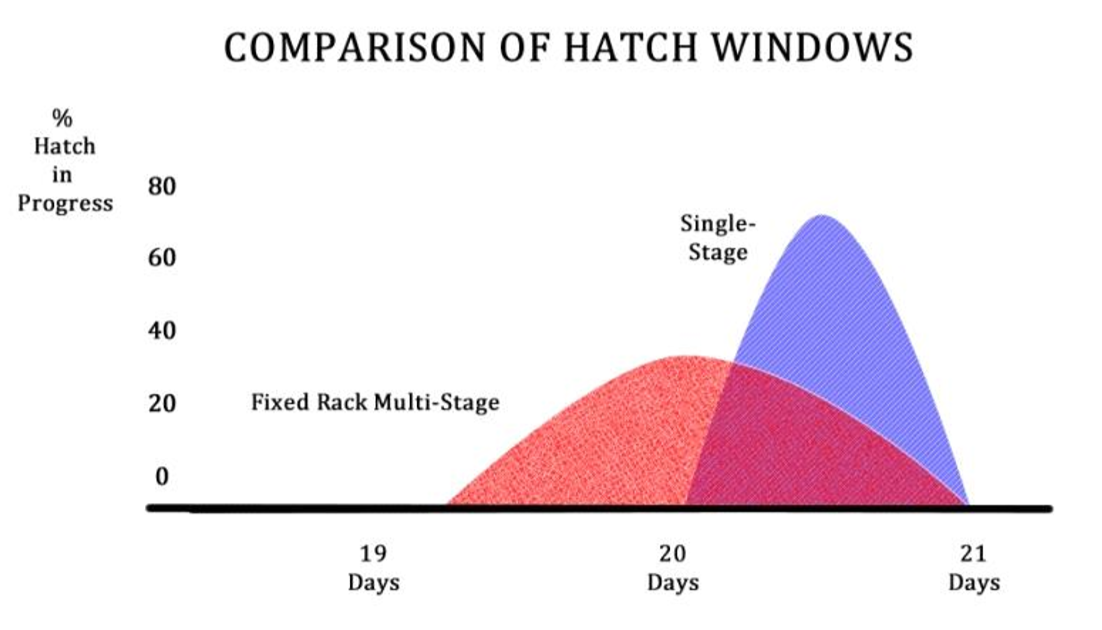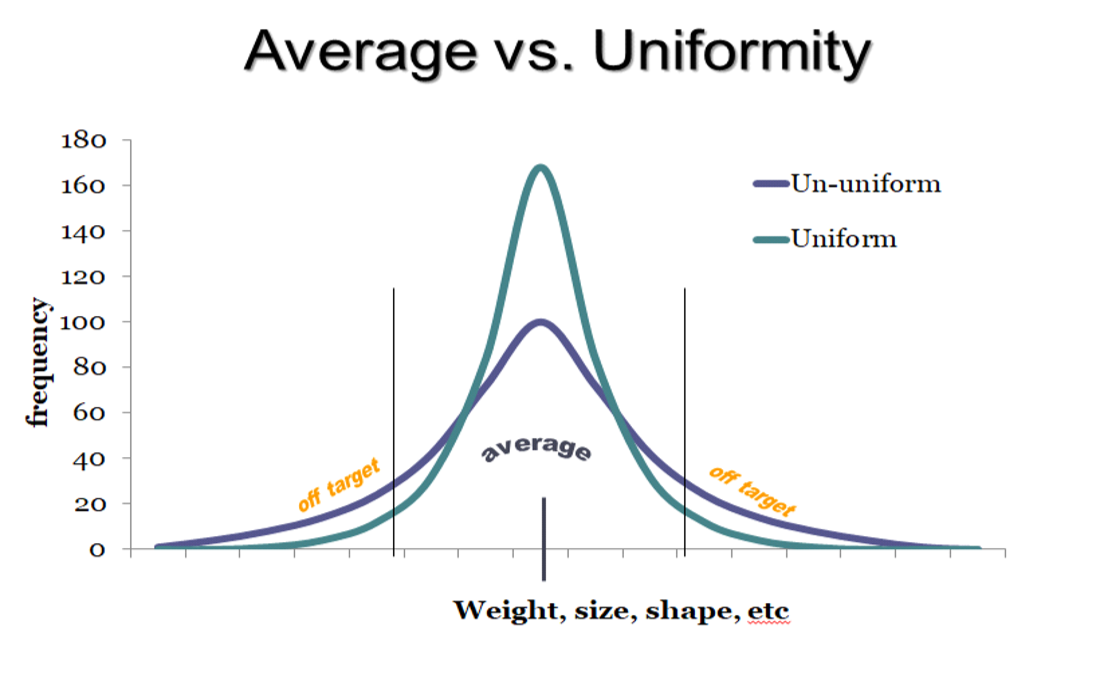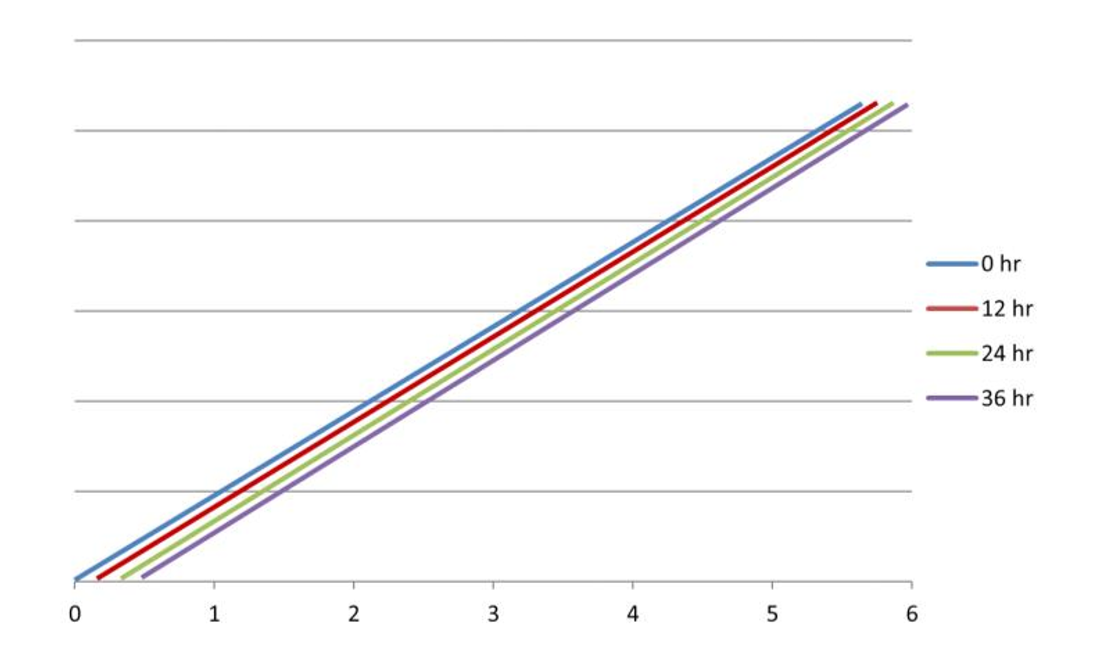



What’s the real issue with early chick feeding?
Dr Keith Bramwell, senior technical advisor to the Jamesway Incubator Company, presents the pros and cons of giving commercial chicks immediate access to food and water.By R. Keith Bramwell, PhD Senior Technical Advisor Jamesway Incubator Company
Introduction 
Getting day old chicks on feed and water as quickly as possible after they are removed from the hatchers is an area of research that has been very well covered, and has been discussed for decades. This topic continues to arise in an effort to emphasise the importance of getting an entire group of chicks off to a positive start with proper feeding and brooding of day old chicks.
This is usually considered an area of brooding that had been addressed to further emphasise the importance of producers getting the houses ready for the birds prior to the time of their arrival. Having the proper floor and house temperature is critical to make sure the birds all begin food and water consumption as soon as possible after they are placed in the brooding facility. At this point in time, this is well known and well accepted in the commercial poultry industry. However, there are situations where feed and water is not immediately available to the chicks, such as long transportation from the hatchery to the brooding facility. In these cases, feed supplements are offered to all the chicks while in the transportation boxes to sustain them until they are all ready to be placed in the houses. However, these situations are unavoidable, and all chicks are treated uniformly to keep them hydrated and ready to respond when they reach their destination.
Although it has been shown repeatedly that chick growth and development is delayed in relation to the timing of their access to feed and water, there are certainly other factors to consider when discussing when the newly hatched chicks should begin eating and drinking. The day old chick (Gallus gallus domesticus) is a precocial chick, meaning that at the time of hatch they are mobile and covered in down so they are able to keep their bodies reasonably warm.
(Dr Bramwell's popular article 'To feed or not to feed? The importance of early chick feeding')
Chicks hatching in nature
In nature, precocial chicks will attempt to synchronise their time of hatch through a process called ‘clicking’, where in the last few days prior to actually hatching, the chicks begin communicating with each other through the shell.The attempt is for them to hatch together, as a group with most precocial chicks hatching within 24 hours or less of each other.
At the time the chicks hatch under the mother hen, each of them is ‘equipped’ with yolk material to sustain them until ALL the chicks are hatched and ready to begin foraging for food as a group, or clutch. Although the chicks hatch mobile and ready to forage, they must have internal reservoirs of resources at their disposal while they wait until the mother hen takes all the chicks from the nest to begin foraging for food.
The modern single-stage incubation equipment has provided an environment where chicks are able to hatch within that 24 hour window that occurs under the mother hen (Figure 1). The single-stage incubation system and profile is designed to mimic the mother hen as well as provide all the developing embryos the environment they require at each stage of incubation and development. Therefore, when an artificial incubation system is operating properly, the chicks will hatch within a window similar to what happens in nature.
Figure 1. Expression of a 24 hour hatch window in single stage incubation.
Commercial production systems
One of the major focuses of the poultry industry is to attain uniformity to ease management practices.
In the commercial production systems, producers are managing incredibly large numbers of birds (eggs for hatcheries), and decisions are made based on the average of the group of birds, or eggs. Average body weight, frame size or other development is NOT the same as uniformity (Figure 2).
It is of critical importance to maintain uniformity in parent stock breeders at every stage of their production. Management programs monitored that are specific to breeders are in place to improve uniformity of the birds such as: floor space, feeder and water space, feed allotment, restricting excess light etc.
These programs are in place to maximise uniformity of the young breeders at the onset of reproduction as well as throughout their productive life. When a larger percentage of birds in a population are closer in fleshing, size and weight to the group average (with fewer outliers), the management programs that are set to cater to the ‘average’ bird in a flock, will result in increased egg production, more uniform egg size, etc. for the entire flock.
Figure 2. Comparison of a flock or group ‘average’ vs ‘uniformity’.
Likewise, broiler production systems attempt to rear broilers that are as uniform as possible so a larger number of birds will fit the predetermined bird size and weight at the time of processing. Excess chick size variation at the time of hatch and placement is always a concern for broiler producers when trying to maximise their performance both early in life and as they are moved to the processing plant. Customer demands can be very specific for size and weight of the birds and the parts after processing and cutup. Therefore, broiler uniformity at the time of processing is very important, and can be influenced by the uniformity of the chicks at placement.
Feeding of day old chicks, pros and cons
When discussing this topic, maybe the real questions should be focused both on what is natural and what are the real results of early feeding?
In nature, newly hatched chicks do NOT have access to food and water until all the chicks are hatched and ready to leave the nest with their mother. At the time the chicks leave the nest, some will have been hatched for more than 24 hours, while some will have been hatched for just a few hours, long enough to dry off and rest.
In commercial, or artificial, incubation systems, the goal is to create a hatch window of close to 24 hours, therefore when the hatch is pulled ALL the chicks can begin their growth phase simultaneously, as they do in nature. Creating this hatch window helps to keep the hatched chicks as uniform in size and weight as possible. Once the hatch is pulled it is ideal to move the hatched chicks to the brooding farm in a timely manner so they can have access to feed and water as a collective group.
Published research about the effects of delayed feeding are innumerable and all come to the same conclusion, that the time or onset of a chick’s access to feed and water will have long lasting consequences. In other words, if birds are withheld access to feed for periods of time their growth trajectory will also be delayed throughout their growth phase in the production facility (Figure 3). Likewise, if the earliest chicks to hatch start on feed and water 24 hours or more prior to the last chicks to hatch, the growth trajectory would likely be the same as if chicks are withheld feed.
Figure 3. Growth trajectory when birds are started on feed and water at intervals from 0 to 36 hours post hatch.
In an effort to better understand the effects of the timing of when chicks, within a hatch group, begin the consumption of food and water, an initial study was designed.
Early results indicate that when the first chicks to hatch are provided food and water immediately after hatch, they have a higher chick placement weight as opposed to those that did not gain access to nutrients until placement in the brooding facility. This was expected as the chicks that began food consumption would have food and water in their guts at placement. Additionally, this increased body weight by the first chicks hatched was carried out through three weeks of age, as compared to the control chicks, or those not fed until placement. Although at 42 days of age the difference in body weight was still numerically higher in the birds that began feeding in the hatchers, it was no longer significantly different.
So the birds that had access to food immediately after hatch did not perform better than the control group. Unfortunately, at the time of this writing we did not have the data formalised to a point we can accurately evaluate the differences in uniformity. Therefore, it stands to reason that considering that each chick was provided access to feed and water in the hatcher, at the specific time they hatched, that the hatched group of birds would contain a wide range of chicks and time of feed intake. Some chicks would have been eating food for more than 24 hours while some chicks only had access to feed for as little as a couple hours prior to placement. This would create a group of chicks that have variation in weight and activity level before they are even taken the brooding facility. As data suggests, this would result in not only an initial variation in chick eights, but potential variation in performance thereafter.
Summary
There is more research on this topic underway, but in the meantime, the potential benefits of feeding chicks immediately after hatch must be compared to the potential negative impacts. However, from our preliminary research, it does not appear that there was any benefit to the practice, with only potential negative impacts on uniformity of bird growth performance.












